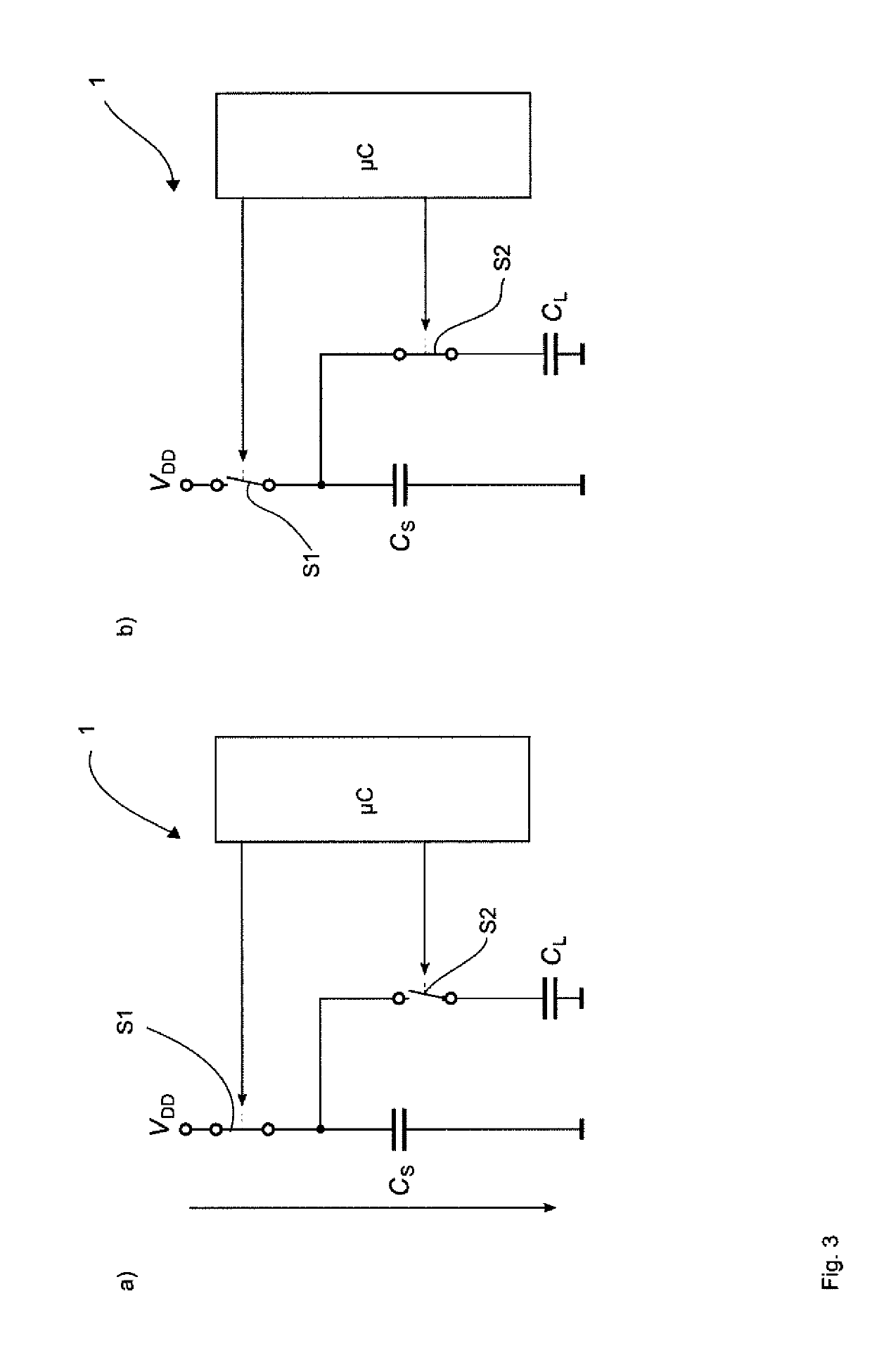Method for evaluating a capacity value of a capacitive sensor electrode
a capacitive sensor and capacity value technology, applied in the direction of resistance/reactance/impedence, pulse technique, instruments, etc., can solve the problems of product irradiation of electromagnetic waves subject to normative limitations, unsatisfactory alternate electromagnetic fields, and special effects, etc., to achieve the maximum value of frequency-dependent irradiation power density, the effect of broadening the bandwidth of the signal spectrum and reducing heigh
- Summary
- Abstract
- Description
- Claims
- Application Information
AI Technical Summary
Benefits of technology
Problems solved by technology
Method used
Image
Examples
Embodiment Construction
[0063]FIG. 1a shows a representation of coupling and decoupling durations during a portion of a charging process of a sensor electrode for evaluating its capacity. A voltage U, which is applied on the sensor electrode, is shown as a function of time t. As shown, a charging voltage UL is applied for a coupling duration tK,i on the sensor electrode, whereupon during a decoupling duration tE,i the charging potential is separated from the sensor electrode. The procedure is repeated for a number of coupling and decoupling cycles, wherein in FIG. 1a the coupling and decoupling cycles 1 to 4 are shown, with tK,i and tE,i for i=0 . . . 3. In the representation of FIG. 1a, tK,1=tK,2=tK,3=tK,4=tK,i for all i=0 . . . N−1 of all N coupling and decoupling cycles of the evaluation process. In the same way, tE,1=tE,2=tE,3=tE,4=tE,1 for all i=0 . . . N−1. From the control performed according to FIG. 1a of the coupling of the sensor electrode with the charging circuit, an irradiation characteristic ...
PUM
 Login to View More
Login to View More Abstract
Description
Claims
Application Information
 Login to View More
Login to View More - R&D
- Intellectual Property
- Life Sciences
- Materials
- Tech Scout
- Unparalleled Data Quality
- Higher Quality Content
- 60% Fewer Hallucinations
Browse by: Latest US Patents, China's latest patents, Technical Efficacy Thesaurus, Application Domain, Technology Topic, Popular Technical Reports.
© 2025 PatSnap. All rights reserved.Legal|Privacy policy|Modern Slavery Act Transparency Statement|Sitemap|About US| Contact US: help@patsnap.com



